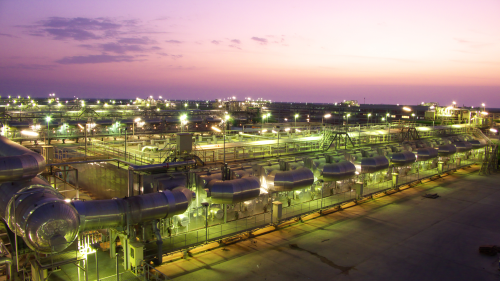The construction of Namibia’s largest desalination plant is slowly taking shape with China General Nuclear Power Group (CGN) at the helm. According to experts, the project will be essential in addressing water shortage and scarcity. CGN, China’s largest nuclear power operator in terms of installed capacity, will work on the project in cooperation with a local water corporation. The company noted its involvement in the project during the 2024 Summit of the Forum on China-Africa Cooperation (FOCAC) in Beijing. Moreover, the project is a milestone in China’s strategic African partnerships. The endeavor will contribute to remedying water security in Namibia while positioning Chinese companies as key players in critical infrastructure development worldwide. Furthermore, CGN’s entry into the water desalination sector in Namibia signals a strategic expansion beyond nuclear energy. The move aligns nuclear operators with broader energy and water security goals. Luo Zuoxian, head of intelligence and research at the Sinopec Economics and Development Research Institute, noted that this significance is of great value.
The Significance of Namibia’s Largest Desalination Plant

China has long been developing nuclear power and has accumulated extensive experience and engineering capabilities in nuclear technology. It has also leveraged an amicable understanding of research and construction operations. Using these insights to implement Namibia’s largest desalination plant makes the company a viable choice. The desalination plant is expected to provide a sustainable water source and enhance local water security. It will also support industries like mining and agriculture in Namibia. Luo said the venture also strengthened China-Namibia ties and reflected China’s commitment to supporting infrastructure development in emerging markets. “The project demonstrates China’s efforts to leverage its expertise in large-scale infrastructure to meet critical needs like water management in developing regions, aligning with China’s broader global infrastructure ambitions under the Belt and Road Initiative,” Luo added. Once completed, the project is also expected to facilitate improving the livelihood of Namibian citizens by providing adequate water.
Also read:
The Scope of Implementation of the Ambitious Endeavor

Once completed by the end of 2026, Namibia’s largest desalination plant will have an annual production capacity of 20 million metric tons of water. The Shenzhen, Guangdong province-based CGN noted these insights. The project, which is part of the results of the BRI cooperation, will alleviate water shortages, especially in central Namibia. It will also help address water shortages in the country’s western coastal areas and support the development of local industries. The company said China-Africa’s economic and trade cooperation continues to gather momentum, driven by several concrete plans announced at the summit in Beijing last week.
China said during the summit that in the next three years, it will work with Africa to implement 10 partnership actions for modernization, such as Namibia’s largest desalination plant. This will deepen China-Africa cooperation and spearhead the modernization of the Global South. The 10 partnership actions cover mutual learning among civilizations, trade prosperity, and industry chain cooperation. They will also enhance connectivity, development cooperation, health, agriculture, and livelihoods. Lastly, they will ensure that they address people-to-people and cultural exchanges, green development, and common security.
Also read:
Namibia’s green hydrogen project by Hyphen Hydrogen Energy receives €5 million loan.

